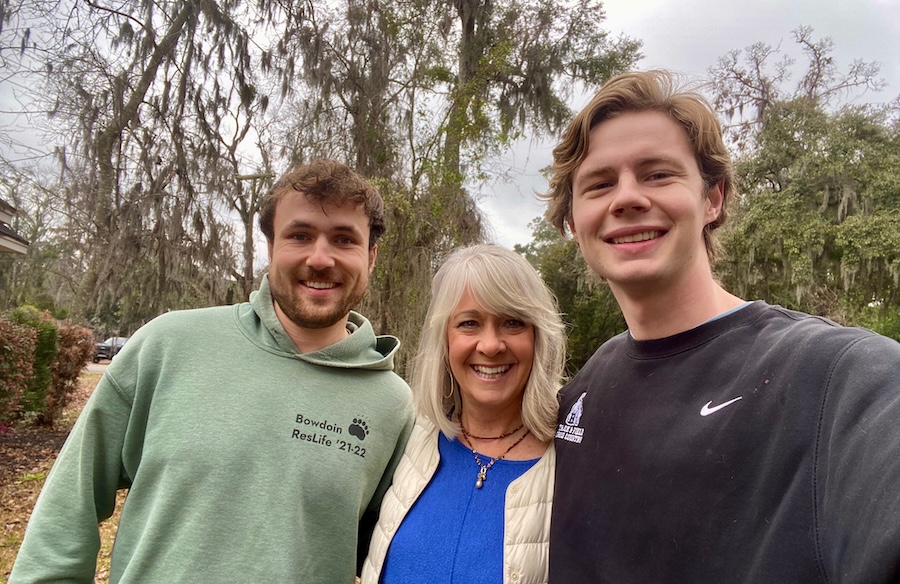Oliver Otis Howard Papers: Mass Digitization Project Complete
By Tom Porter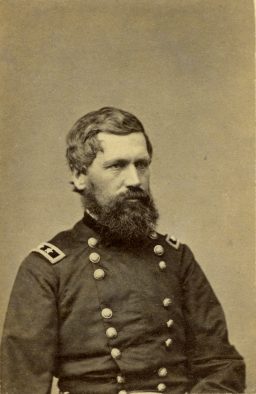
A mammoth digitization project designed to enable public access to the papers of one of Bowdoin's most distinguished alumni is now complete.
In 2014, the College received a $150,000 grant from the National Historical Publications and Records Commission’s “Digitizing Historical Records” program to support a three-year project to digitize the Oliver Otis Howard Papers.
The project also received funding from the Morton-Kelly Charitable Trust and the College.
With the help of twenty-six student workers, more than sixty linear feet of archival materials—some 80,000 letters, photographs and diaries—were scanned and published online.
Howard, born in Leeds, Maine, a member of the Class of 1850, and a career army officer, was awarded the Medal of Honor for valor during the Civil War. Subsequently, he served as commissioner of the Freedmen’s Bureau, and was instrumental in the founding of Howard University and Lincoln Memorial University.
"On top of his Civil War record, Howard was a key figure in the immediate postwar period," said Kat Stefko, director of the George J. Mitchell Department of Special Collections & Archives.
"As the bureau's commissioner Howard was essentially in charge of reconstruction in the South after the war, responsible for educating and providing housing and healthcare for the freedmen of the South."
Meagan Doyle, the project's supervisor, said the work proceeded so smoothly it ran ahead of schedule, "which meant we could expand our efforts to include the collections of Oliver Otis's two brothers, Charles Henry Howard and Rowland Bailey Howard, who were also Bowdoin graduates and influential figures in their own right."
The bulk of the project, though, concerns O.O. Howard, who was prolific in his letter-writing.
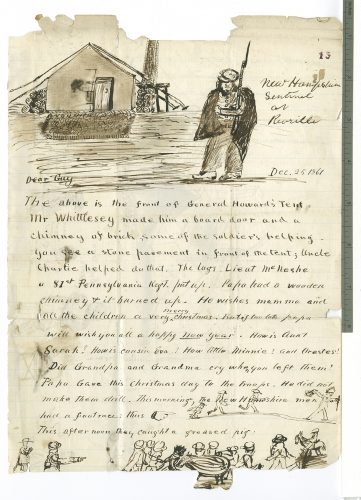
"Because of the sheer volume of letters he produced," said Doyle, "many were dictated to his secretary. Copies of all outgoing letters were made and this involved either the secretary rewriting them in full, or using a letter copying press."
This, she explained, was the closest thing they had to a copy machine in the nineteenth century.
"Letters were written in ink, then pressed down onto very thin onion skin paper, so the text would show through on the reverse side of the paper."
Doyle explained Oliver Otis Howard did write some letters himself however, and continued to do so even after having his right arm amputated above the elbow due to injuries sustained at the battle of Fair Oaks in June 1862.
“This meant he had to learn to write with his left hand,” she added, “which actually makes those letters more legible to us today, because he used block writing.”
The collection is enhanced by a wealth of incoming correspondence. As an example, Doyle held up a copy of a letter written to Howard in March 1871 from a woman named Mary Ann Shadd Cary.
“She was a black woman, an abolitionist who escaped slavery by fleeing to Canada with her family. By 1871 she was a law student and an employee at Howard University, where Oliver Otis was president.”
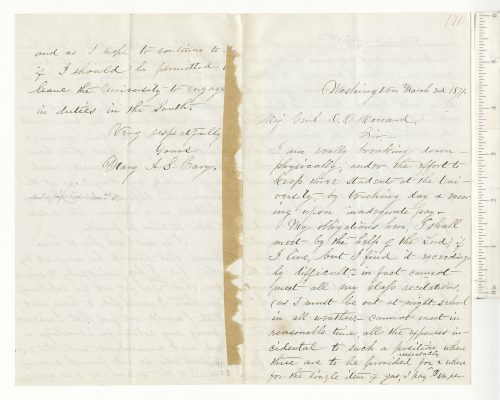
Shadd Cary became only the second female African American to receive a law degree in the US. Doyle explained that “in this letter to Howard she’s complaining about not being paid enough to fund her studies. After fighting against slavery, here she is calling out the pay gap, talking about being paid a woman’s salary for mens’ work. What a fascinating character!”
In addition to the historic and academic rewards, there are practical benefits, as well. “One of the tangible benefits of this project,” said Stefko, “is that it enabled Bowdoin to purchase some very high quality imaging equipment that we can continue to use to build our online resources.” Of particular use, she said, has been the Bookeye scanner, a planetary, or overhead, book scanner.
“The camera is on an arm suspended over the area where you put the item you’re scanning,” elaborated Doyle. “It has a cradle on it, so you can scan books without flattening them and damaging the spine.”
One of the reasons Bowdoin was awarded the NHPRC grant is that the College already has a so-called “finding aid, “or collection guide, in place. This inventory list is now being used to manage the digital, as well as physical, collection.
“Every photo or piece of correspondence in the Howard papers has already been inventoried,” said Stefko, “so as the raw scans are done, Meagan and her team are able to quickly assess them, package them into bundles of PDF files, and link the resulting digital surrogates to the corresponding entries in the existing collection guide.”
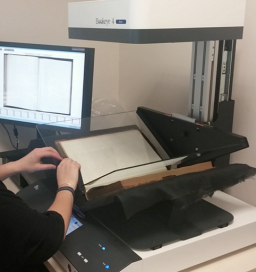
In all, said Stefko and Doyle,176,182 scans have been completed as part of the project, representing the content of more than 4,000 file folders or volumes.
“It’s a resource which some teachers are already taking advantage of.” As an example, she cited David Thomson ’08, who teaches history at Sacred Heart University in Fairfield, Connecticut.
“Thomson has used digitized images from the collection to teach classes, integrating primary sources as part of his instruction.”
Apart from the obvious interest from history scholars, Stefko said the project is also a key part of Bowdoin’s Digital Humanities program, in which data analysis methods are used for added insight.
“For example,” said Doyle, “last semester Visiting Associate Professor of Computer Science Clare Bates Congdon taught a course on data visualization. Using the information from Howard’s correspondence index, a group of her students conducted a geographical and chronological analysis of Howard’s letters, looking at where they were written and how that changed over time.”
“With the complete collection now freely available online,” said Stefko, “students and scholars everywhere, from all disciplines, have direct access to one of the most important collections of primary sources documenting the Civil War, as well as an incredibly rich dataset that can support new and uncharted lines of inquiry into this seminal moment in United States history.”
On March 30, 2017, Kat Stefko moderated a Digital Humanities Lunch and Learn panel. The letters of Oliver Otis Howard were among the texts examined.
Although now fully available online, the Howard papers digitization project formally launches March 31, 2017. At 5 p.m. in the Chandler Room, Hawthorne-Longfellow Library, the public event, The Life & Legacy of the Howard Brothers, celebrates the culmination of the three-year digitization project. Hear from students who worked on the project and try your hand at transcribing nineteenth-century correspondence.
